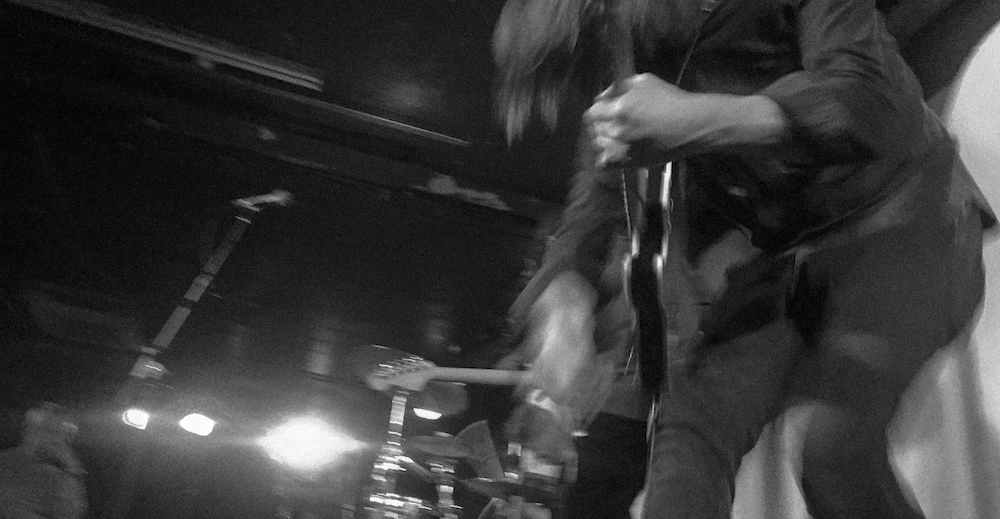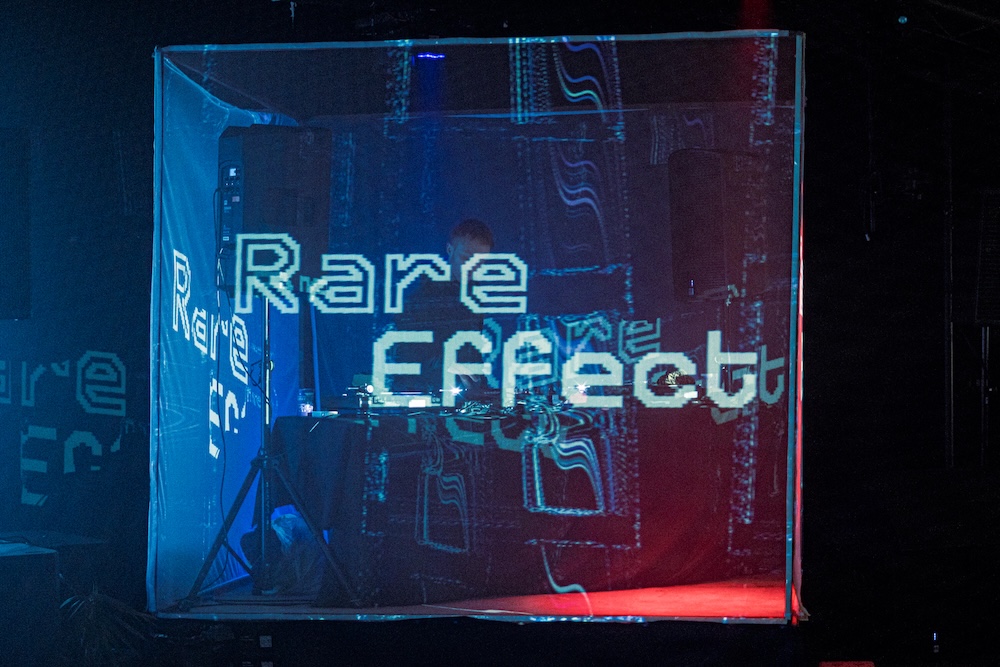Review: Disappears – Low (Live At The 100 Club)

In November 2014 Disappears were commissioned to perform as part of the Bowie Changes series held at Chicago’s Museum of Modern Art, the city from which the band originate. Purveyors of a polymorphic but monochromatic psychedelia, their diverse distillation of concussive garage, rigid motorik and sepulchral dub may have initially felt ill-fitted to the brighter, more profligate corners of Low. Considering David Bowie has previously highlighted the R&B essence of the band who played on the album, Disappears may not appear, at first glance, to be glaring first choice candidates for such a task. Low was both the chronological and aesthetical next step, following the brazen debonair funk of Young Americans and the extrapolated soul balladry of Station to Station. Those aren’t qualities which immediately spring to mind upon hearing the work of Brian Case, Jonathan Van Herik, Damon Carruesco and Noah Leger. Yet recent releases like ‘A New House In A New Town’, ‘Era’, and ‘Irreal’ have displayed an ever expanding intent to estrange their sound, into the kind of rare alien places Bowie, Tony Visconti, and Brian Eno made ambitious incursions to during the production and the resultant instrumental second half of Low. In the imminence of Sonic Cathedrals release of a full live recording of the band’s original translation in Chicago, and having witnessed the convincing incorporation of ‘Always Crashing In the Same Car’ 'into their encore at a London appearance in February of this year, this one time show represented a chance to establish conclusive judgement on whether they’d comprehensively nailed their tribute.
Preceding their set however was a curious turn from support act and Oscillation compatriot, Demian Castellanos, who’s mutable long form guitar instrumentals switched from the kind of grievous, engulfing bad trip density of Keiji Haino to the intimate bedroom haze and vaporous jangle of The Durutti Column. In a low lit 100 Club, the atmosphere conjured by Castellanos did at times wreak a pulverizing resonance, one that wasn’t fully complemented by the speakers which seemed to buckle at times of extremity – ringing out damaged distortion – but it proved an absorbing enough feat of improvisatory intensity.
Throughout the night films were projected on the stage wall. In the wake of Castellanos and preluding the arrival of Disappears was an apt choice in the form of Nicolas Roeg’s The Man Who Fell To Earth, the soundtrack of which has often been supposed as the originally intended place for many of the tracks which feature on Low. Although Bowie has countered this claim, it’s tempting to associate the astral expansiveness of ‘Warszawa’ and ‘Art Decade’ with the enduring image of Bowie as a dislocated extra-terrestrial. Coupled with the garish blood-red walls of the venue, there was something quite ostentatiously retro-futurist about the setting, one which seemed to fit with that context.
Yet with ‘Speed of Life’, the band revealed a sound faithful to the rawboned R&B that characterises Low’s first side. Any misgivings about the band’s ability to translate that style were quickly diminished by a fine-tuned, kraut-edged proficiency. An elemental interpretation, it seemed to nod to the relentless full-tilt engine-room drumming of Can’s Jaki Liebezeit and Neu’s Klaus Dinger as much as Bowie’s visionary art rock lustre. Alongside such dogged drive, the guitar parts seemed to be quartered into a waspish shockwave-fuzz, an alteration which added an appealing modern psych slant to the band’s depiction.
With little ceremony between the tracks, the band then ran straight into ‘Always Crashing In The Same Car’, conveying a sense of culmination. Their version was hushed, lustful, and snake-hipped, subtly amplifying the notion of an erotic, Ballardian pile-up fetish, rather than the brooding melancholia defining Bowie’s original.
Moving into the second side, bassist and co-vocalist Damen Carruesco admirably versioned the call-to-prayer echoes of ‘Warszawa’ whilst adding an ominously stewing undertow of sonority. But it was the band’s downward slope into a grand tumbling wreckage of progressive dread on ‘Weeping Wall’ that stood out, turning the unusual New York minimalist sustains of the original into deathly disarray. Ending on a forlorn, capacious sounding rendition of ‘Subterraneans’, the momentary final quiet of this conclusion brought home how categorical and measuredly divergent their reworking was. It became obvious why a live art exhibit project has now morphed into a full scale release. An authentic twist on one of the eternally lauded missives of Bowie’s Berlin Trilogy, which, crucially, felt unimpeded by reverence.
Photo by www.jonni.me

















Must Reads
David Holmes – Humanity As An Act Of Resistance in three chapters
As a nation, the Irish have always had a profound relationship with the people of Palestine
Rotterdam – A City which Bounces Back
The Dutch city is in a state of constant revival
Going Remote.
Home swapping as a lifestyle choice
Trending track
Vels d’Èter
Glass Isle
Shop NowDreaming
Timothy Clerkin
Shop Now